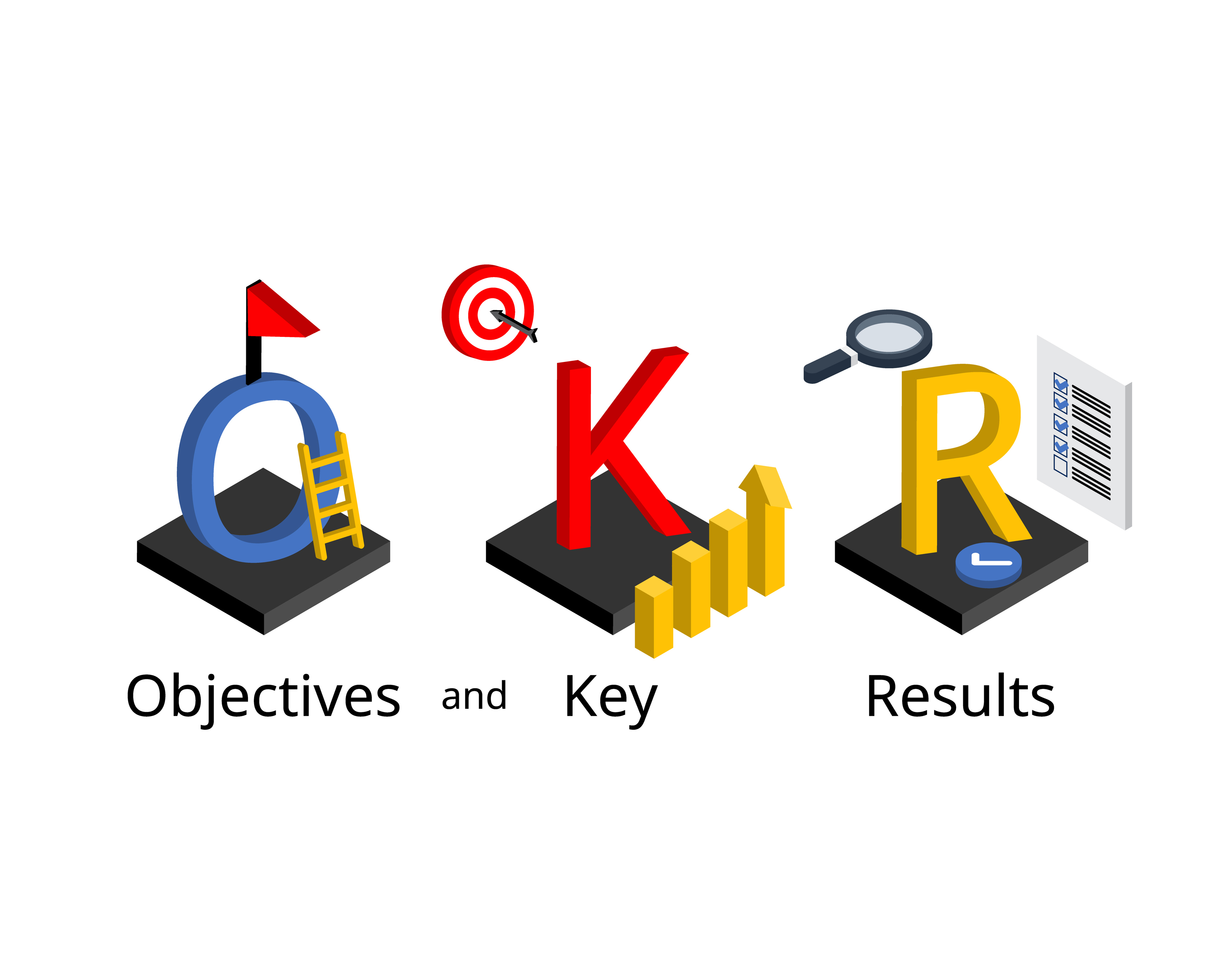OKRs in knowledge management drive sustainable progress while aligning innovation and key initiatives with the overall business goals.
In the competitive business scene, effective use and sharing of knowledge assets can be the difference between success and failure. Integrating OKRs into knowledge management empowers your business, building a robust framework for setting and achieving goals through knowledge development, learning, and sharing.
OKRs ensure proper knowledge management, helping you create a positive culture of continuous improvement. This guide explores the power of OKRs in knowledge management, highlighting their importance, key technology metrics, and solutions to common challenges.
The Role of Knowledge Management in Enhancing Performance
Knowledge management is vital for any business or project, especially when working with multi- or cross-functional teams or in dynamic business environments. The challenge is determining how to align knowledge sharing with the overall business objectives, strategies, and vision.
Adopting the OKR framework addresses this issue by creating a powerful yet simple way to set measurable, achievable goals and track progress. It becomes easier to understand and achieve strategic objectives that drive innovation, knowledge use, and sharing.
Knowledge management also enhances collaboration and helps you establish a common direction and shared vision. OKRs ensure your team's objectives and key results are visible, which encourages a culture of accountability and transparency. In addition to stimulating continuous learning, you can easily re-evaluate and adjust OKRs while identifying potential challenges and improvement areas.
Setting and Aligning OKRs for Organizational Success
As John Doerr resonates in his book, Measure What Matters, OKRs clear the line of sight to your team’s objectives, exposing redundant efforts to save you time and money.
Setting and aligning OKRs ensures your team never loses sight of what’s important to your business. OKRs become the “north star” metrics to guide individual efforts towards the overall vision and business goals. They help everyone understand the strategic reason why, how, and what to work towards.
OKR alignment also ensures streamlined progress and unified efforts. It brings visibility and coordination that helps you recognize and leverage areas of synergy.
Furthermore, OKRs support each other and are interlinked, creating a vibrant collaborative environment powered by collective achievement.
Leveraging Knowledge Management to Achieve OKRs
In knowledge management, OKRs help you define and identify vital metrics that become benchmarks for success. You may incorporate effective metrics in key aspects such as:
1. The innovation rate to monitor the frequency and effects of new initiatives and innovative ideas within your team
OKR Example: Fostering a productive environment of creative thinking and innovation
○ Key Results:
1. Implement specific innovation-focused initiatives to enhance your team’s innovation rate by 50%
2. Create and adopt at least 20 innovative ideas with measurable impact annually.
2. The level of your team's participation or engagement in learning and development
OKR Example: Ensuring continuous learning and development
○ Key Results:
1. Use knowledge utilization initiatives to boost the post-training application rate by 40%
2. Attain 90% team participation in at least three development and learning programs biannually.
3. The sharing index to determine the extent to which various team members share information
OKR Example- Enhancing Knowledge Sharing
● Objective: Promoting a culture of collaboration and knowledge sharing.
○ Key Results:
1. Boost the knowledge-sharing index by 30% by adopting a knowledge-sharing platform.
2. Organize and oversee at least 10 cross-functional knowledge exchange meetings quarterly.
These metrics ensure knowledge drives innovation and progress in initiatives that directly impact your business’s strategic objectives.
Technology for Knowledge Management and OKRs
Knowledge management technology helps to address challenges such as knowledge hoarding, loss, and silos. These advanced tools simplify how you use, share, and store organizational knowledge. You can easily create a structured system that supports data-focused decision making, innovation, and optimum productivity.
Key technologies you can use to monitor OKRs in knowledge management include:
● Collaboration Tools
Innovative collaboration tools enhance collaboration and teamwork through real-time communication. They simplify knowledge sharing, providing a common platform for team members to work together, share documents, and elaborate on ideas.
● Learning Management Systems (LMS)
The platforms allow easy management and delivery of e-learning courses and training programs. They allow knowledge sharing by giving team members access to training resources and educational materials.
LMS tools also enhance the effectiveness of training programs and fast-track the learning process.
● Knowledge Discovery Tools
These vital tools help with data analytics and mining to identify hidden dependencies, patterns, and trends. It's easier to make data-based decisions and identify knowledge and skills gaps that can transform your business.
● Knowledge Mapping Tools
These tools aid in visualizing knowledge-rich areas and relationships between your knowledge assets. You’re able to recognize crucial knowledge holders to guide retention efforts and understand the flow of information and where or when breakdowns occur.
● Knowledge Repositories
Such repositories are central to where your team stores information. These databases ensure safe storage, retrieval, and easy access to essential knowledge, enhancing productivity and efficiency while eliminating redundancy.
Challenges and Solutions
Knowledge is often volatile and can become outdated swiftly, especially if your business is in a fast-paced or evolving industry. Common challenges you may encounter in knowledge management are such as:
● Knowledge Silos
Overcoming silos is among the biggest challenges you may encounter. Teams or members working in isolation impact collaboration, causing the loss of valuable insights.
The best way to overcome this challenge is to foster a knowledge-sharing culture. If you encourage competition or your team works in silos, you may start by appreciating active contributors to the knowledge base.
Introducing programs like peer-to-peer mentorship allows skilled team members to share expertise, even with individuals who aren't naturally inclined to share.
● Technology Limitations
Poor or inadequate technology can derail effective knowledge management. Complex and outdated tools make it more challenging to achieve your goals as they discourage your team from using the system.
Invest in intuitive and advanced tools that integrate with current workflows and daily processes. Such platforms automate repetitive processes, centralize knowledge, and make information accessible to save time.
● Unclear processes
Lacking clear guidelines often causes chaos in how your team captures, stores, organizes, and shares knowledge. Some people may not understand what needs documenting, what's important, and where to store that information, leading to data inconsistency.
Establish clear standards and processes, and train all team members on their importance and how to abide by the regulations.
Measuring Success: Metrics and ROI
Determining knowledge management ROI requires a strategic approach, depending on your business structure, team capabilities, and financial impact. Some metrics you may use to assess the success and effectiveness of your team’s knowledge management include:
Knowledge sharing metrics
These are metrics that measure how effective knowledge sharing initiatives are, for example:
· The adoption rate for shared best practices
· Number of successful knowledge-sharing sessions
· Frequency of Cross-departmental collaboration
Knowledge usage metrics
These metrics monitor how your team uses knowledge resources and how it affects productivity and performance, for example:
● Time used on knowledge-intensive tasks
● ROI in knowledge utilization
● Effectiveness of knowledge in resolving issues
● Frequency of knowledge utilization
Knowledge creation metrics
These metrics assess your team’s ability to innovate and create new ideas, for example:
● Percentage of team members engaged in idea generation
● Number of new ideas
● Success rate of pilot projects
Future Trends and Innovations
The future of OKRs and knowledge management depends on how effectively businesses can leverage knowledge assets. To maintain competitiveness, embrace emerging innovations and trends that unlock data potential, such as:
Clean Data
AI has an immense capacity to drive business growth, but this depends on the quality of available data. Poor quality data affects AI-driven insights, which may cause misleading predictions and expensive mistakes.
Optimize AI success by investing in data-cleaning technology and automating the organization of data to keep it AI-ready.
Integrate IT in All Strategic Decisions
IT teams are key to success as they protect your business from security risks like data breaches. As cyber threats continue to evolve, equip your IT team with advanced tools and ensure continuous upskilling to keep up with the rapidly changing AI technologies.
Streamline the Tech Ecosystem
More businesses are shifting towards interconnected tech ecosystems that enable knowledge sharing and collaboration. Instead of stand-alone tools, integrate the existing ones into unified ecosystems for better data flow, communication, and informed decision-making.
A better alternative is to invest in a comprehensive, intuitive, and robust performance management system with built-in knowledge management, collaboration, and CRM tools. Such a platform makes it easier to seamlessly navigate between tools while maintaining a comprehensive view.
With these unlimited capabilities, unlocking the potential of knowledge management and OKRs will help your business maintain a competitive edge and empower your team to achieve long-term and short-term goals.
_________________________





.png)
.png)
.png)
.png)